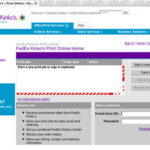Have you ever downloaded an audiobook off the Internet? Often you’ll find that they’ve been broken down into individual files, equal to the number of chapters in the original book. Sometimes, I’ve even seen them split into one-minute chunks, which means you may have hundreds of individual files. This isn’t something that’s easily organized and listened to, frankly.
Or have you ever tried to grab a series of web pages and store them on your hard drive? Again, depending on how the website is set up, you may find that you have more pages than you’d imagined would be necessary. Whether this is because the original website was making money off advertising (and so used more pages than “necessary” in order to maximize the number of ads), or whether that’s just how it worked out, you may again find yourself with dozens (hundreds?) of web pages.
For Mac or Windows users looking for a way to alleviate this mess, a program called File Stitcher has come to the rescue. File Stitcher, as the name hints, is a simple utility designed to take those separate files and “glue” them into one long file.
Now, this is a bit different from a program like Split&Concat;, which is designed to recombine programs with .001 and .002 and .003 extensions (from being split with the “split” command), but it’s not to dissimilar. In the case of Split&Concat;, it’s simply putting together files that were broken into multiple chunks in order to speed distribution. With File Stitcher, you’re likely putting files together that weren’t necessarily meant to be combined, but that will benefit from it.
I’ve used File Stitcher a couple times (the demo version only, which means I’m limited to combining no more than two items, just to see that it worked), and it worked as I expected, especially with text files. File Stitcher works for both HTML and TXT files. In each case, I took a couple files I had lying around on my hard drive, files which had nothing at all to do with each other, and had File Stitcher put them together.
When I then opened the mega-file, I was happy to see the expected result. The file looked exactly like the original first file, until it was done, and then the second file started right away. Beautiful. As I mentioned, this is quite useful for someone, for instance, who saves editorial columns off the Internet, and who then wants to have them all in one file. Simply use File Stitcher to put them together, and instantly you have no more mess.
File Stitcher, as mentioned, also has the ability to stitch together MP3 files, although this features is a bit less useful, at least in how its implemented. In my testing, I came to realize that although File Stitcher would combine two MP3 files which had been encoded at the same bitrate, it would not combine two MP3 files using VBR (variable bitrate) encoding, since those files present themselves as having different bitrates. I encode most of my music using VBR encoding, since it’s always seemed more efficient to me, so in this regard File Stitcher would be pretty useless to me, unless I first re-encoded all my MP3 files (in which case I could simply combine them while doing the re-encoding, thereby rendering File Stitcher unnecessary).
Still, File Stitcher does do what it says. It’s quite simple to use, albeit maybe a bit more expensive than I think is really warranted for a utility such as this. If you’d like to try it out, head over to Pariahware, and download a trial copy. File Stitcher, as mentioned, is available for both Mac and Windows, and costs fifteen dollars.



